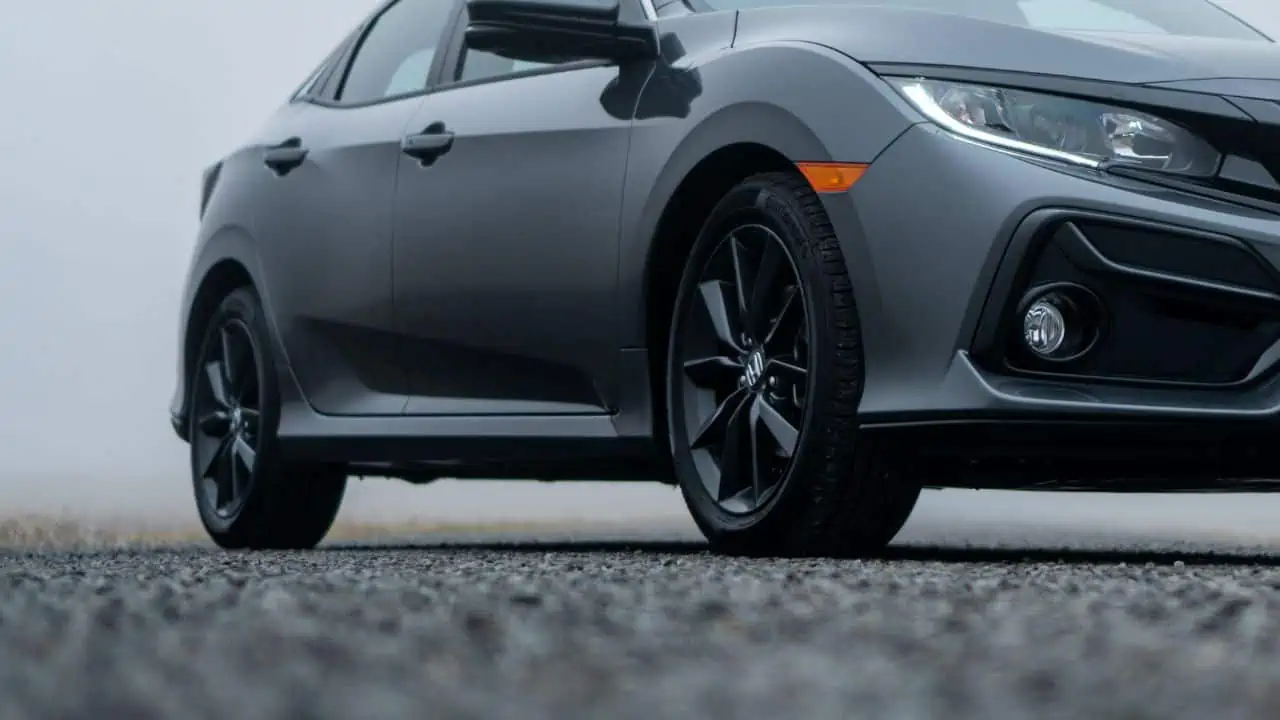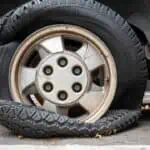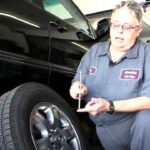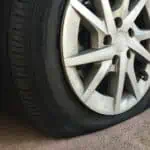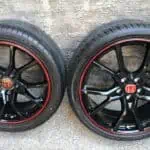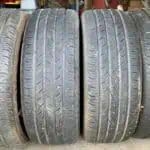If you have a dual-wheeled vehicle, it’s important to know how to check the tire pressure. This can be a little bit tricky, but with some patience and carefulness, it can be done.
- Park your vehicle on a level surface and turn off the engine
- Locate the valve stem caps on each tire
- Use a tire pressure gauge to check the air pressure in each tire, including the spare tire if your vehicle has one
- Compare the readings to the manufacturer’s recommended air pressure for your specific vehicle model
- If any of the tires are low on air, use a portable air compressor or visit a service station to inflate them to the proper level
- If you don’t have an air compressor or can’t get to a service station, you can temporarily drive on low tires, but you should visit a service station as soon as possible to have them properly inflated
How to Check Tire Pressure on Dual Wheels?
How Do You Check Air Pressure on Dual Tires?
There are a few different ways that you can check the air pressure on dual tires. One way is to use a tire gauge. You can either use a handheld tire gauge or one that is built into your vehicle.
Another way is to use an air compressor. This will give you an accurate reading of the air pressure in each tire.
Why Would You Check between Your Dual Tires?
Assuming you are talking about a semi-truck:
There are a few reasons why you would want to check between your dual tires. One reason is that if one of the tires goes flat, the other tire can help support the weight of the truck and keep it from tipping over.
Another reason is that if one of the tires blows out, the other tire can help keep the truck from veering off course.
It’s important to check between your dual tires regularly to make sure both tires are properly inflated and don’t have any cuts or bulges. If one of the tires looks like it might be going flat, you can switch it with the other tire so that both tires will last longer.
How Do I Know What Psi My Wheels Are?
The pressure of the air inside your car’s tires is measured in pounds per square inch or PSI. The proper PSI for your car’s tires can be found in your owner’s manual, or on a sticker inside the driver’s door. Under-inflated tires can lead to tire failure and blowouts, so it’s important to check your tire pressure regularly and keep them inflated to the proper PSI.
How Do You Check Tire Pressure Without a Tire Gauge?
It is very easy to check your tire pressure without a tire gauge. All you need is a simple household item that can be found in most kitchens – a straw! To use a straw to check your tire pressure, insert the straw into the valve stem on your tire and then press down.
If the air pressure in your tires is good, then the straw should stand up straight. If the air pressure is low, then the straw will bend over. So, there you have it – an easy way to check your tire pressure without a tire gauge!
Just remember to keep an eye on your tires’ air pressure levels so that you can avoid flat tires and other problems down the road.
Dually Tire Pressure Equalizer
If you’ve ever had a dual truck, you know that one of the most important things to keep in check is the tire pressure. Most people don’t realize that there’s a special tool for this – it’s called a dual tire pressure equalizer. This tool helps to make sure that both sides of your truck have the same amount of air in their tires.
This is important because if one side has more air than the other, it can cause your truck to veer to one side or the other. Not only is this dangerous, but it can also damage your tires and suspension over time. A dual tire pressure equalizer is a must-have for any dually truck owner.
It’s an inexpensive way to keep your truck running safely and smoothly, so be sure to pick one up before your next road trip!
Dually Tire Pressure Monitoring System
If you have a dually truck, then you know how important it is to keep an eye on your tire pressure. After all, you don’t want to end up with a blowout while driving down the highway. That’s why it’s a good idea to invest in a dual tire pressure monitoring system (TPMS).
A dual TPMS is designed specifically for use with dual rear wheels. It helps you keep track of the air pressure in each tire so that you can make sure they’re always properly inflated. This can help improve fuel economy and extend the life of your tires.
There are several different types of dual TPMS available on the market. Some are stand-alone units that mount on your dash, while others integrate with your truck’s existing infotainment system. There are also wireless options that use sensors mounted on each wheel to transmit data to a receiver inside the cab.
No matter which type of dual TPMS you choose, it’s important to make sure that it’s compatible with your specific vehicle. You’ll also want to consider how easy it is to install and use before making your final decision.
Valve Extensions for Dual Wheels
If you have a dual-wheel bicycle, you know that pumping up both tires can be a bit of a pain. You have to bend down low to reach each valve, and then try to hold the pump steady while you fill up both tires. If your bike has quick-release valves, it’s even more difficult because you have to make sure that each side is locked in place before you start pumping.
With valve extensions, all you have to do is screw on the extension to each valve and then pump away! No more bending down low or worrying about the quick-release valves. Valve extensions come in different lengths, so you can choose the perfect size for your bike.
And they’re not just for dual-wheel bikes – if you have trouble reaching your bike’s valves, these extensions will help out there too.
How to Inflate Dual Rv Tires
One of the most important things you can do to maintain your RV is to keep its tires properly inflated. Not only will this help with fuel economy, but it will also extend the life of your tires and make for a smoother ride. Here’s how to inflate dual RV tires:
1. Park your RV on level ground and set the parking brake.
2. Find the correct tire pressure for your RV in its owner’s manual or on a placard located on the RV itself. Inflate all tires to this pressure, including the spare tire.
3. Use a tire gauge to check that each tire has been inflated to the proper pressure. Adjust as necessary.
4. Once all tires are properly inflated, release the parking brake and continue on your way!
How to Inflate Inside Dually Tire
Assuming you have a standard dually tire, the process for inflating it is as follows:
1. Park your vehicle on a level surface and set the parking brake.
2. Remove the cap from the valve stem on the tire you wish to inflate.
3. Use a tire gauge to check the air pressure in all of your tires, including the one you’re about to inflate. Make a note of any that are low so you can fill them up later.
4. Connect your air compressor to an electrical outlet and turn it on. If you’re using a portable air compressor, connect it to your vehicle’s battery using jumper cables or another similar method.
5. Set the regulator on your air compressor to the recommended PSI for your tires (this will be listed in your owner’s manual). For most dually tires, this is between 80 and 90 PSI.
Dually Tire Inflation Kit
To keep your dually truck’s tires inflated properly, you’ll need a good quality tire inflation kit. A dual tire inflation kit typically includes an air compressor, gauge, and hose. You’ll use the air compressor to fill up the tires with air, and then use the gauge to check the pressure.
If it’s low, you can add more air until it reaches the proper level. It’s important to check the pressure regularly, as under-inflated tires can lead to premature wear and tear.
Best Dual Tire Pressure Equalization System
If you are looking for a quality dual tire pressure equalization system, then you have come to the right place. Here at Best Dual Tire Pressure Equalization System, we offer only the best products on the market. Our systems are designed to equalize the pressure between your front and rear tires, ensuring that both sets of tires are receiving the same amount of air.
This is important because it helps to prevent uneven wear on your tires, as well as improve your vehicle’s handling. Our systems are easy to install and use, and they come with all of the necessary hardware and instructions. We also offer a wide variety of different models to choose from, so you can find the perfect one for your specific needs.
Whether you need a system for a light-duty truck or a heavy-duty rig, we have what you’re looking for. And if you ever have any questions or problems with our products, our customer service team is always here to help. So if you’re in the market for a dual tire pressure equalization system, be sure to check out Best Dual Tire Pressure Equalization System today.
You won’t be disappointed!
Best Dually Tire Pressure Gauge
There are many factors to consider when purchasing a tire pressure gauge for your vehicle. If you have a dually, it is important to find a gauge that can accurately measure the pressure in both tires at the same time. The best dual tire pressure gauges will have large, easy-to-read displays and dual sensors that can be quickly calibrated.
You should also look for a model with an auto shut-off feature to conserve battery life.
Conclusion
It’s important to keep your tires inflated adequately because it can improve your gas mileage and extend the life of your tires. You should check your tire pressure at least once a month. If you have dual wheels, you’ll need to check the pressure on each tire.
To do this, you’ll need a tire pressure gauge. You can find these at most auto parts stores or online. Once you have a gauge, simply attach it to the valve stem on each tire and get a reading.
Compare this to the recommended pressure for your tires (which can be found in your owner’s manual or on the placard inside your vehicle’s door). If any of your tires are low, inflate them until they reach the proper pressure. Once they’re all inflated, put the cap back on each valve stem and you’re done!
